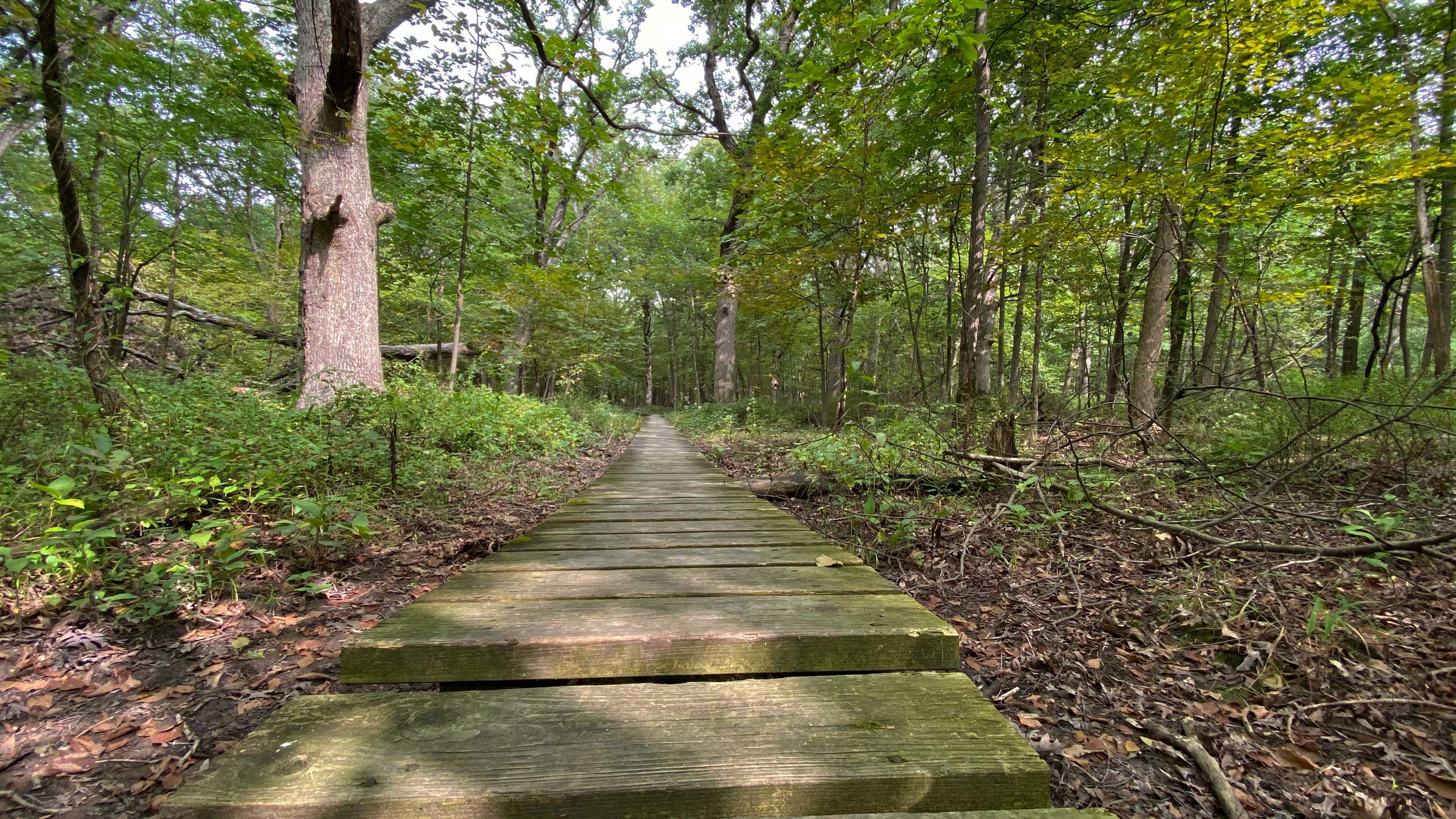| Story by Cindy Cain |
9/14/2020
April Richards sat on a bench near Owl Lake on a summer morning, listening to sporadic banjo-like sounds.
The short bursts of musical strumming noises were coming from green frogs that live in the lake within Thorn Creek Woods Nature Preserve.
The sounds produced the kind of simple, relaxing moment that can rejuvenate visitors who trek through the dense forest to the lake.
Richards, who jokes that she ‘speaks frog’ and will imitate them on occasion, is an interpretive naturalist for the preserve, which was almost lost to development decades ago.
But a stroke of “sheer luck” and a lot of hard work by a dedicated group of volunteers led to the preservation of 1,025 acres in the middle of a populated area on Monee Road, north of Stuenkel Road, in Park Forest and University Park.
If you visit the preserve now, you will see the Civil War-era church that was moved to the site and now serves as the Thorn Creek Nature Center. You can hike the woods, traverse the boardwalks, visit the lake, arrange to tour the historic farm and its garlic crop and view the massive oak and hickory trees that were left untouched by development.
“It’s wilderness here in the middle of the suburbs,” said Judy Mendelson, who has been affiliated with the preserve since 1978 and now serves as chairwoman of the Thorn Creek Woods Management Commission.

)
)
)
)
)
)
)